In preparation for your first assignment, take some time to review the sketchbook and project work that you have completed for Part One. If you haven’t already done so, record your reflections in your learning log/blog. Think about the ideas and approaches explored and what you have thought about and learnt. It may be helpful to consider the following questions:, How and to what effect, have you explored:
- Your own physical presence in your work and your physical and sensory relationship to theacts of drawing and painting.
- Painting as action and event.
- The part played by chance, endurance and the passing of time in forming your work.
- Your relationship to painting; what you consider it to be, or not be.
- New possibilities to reflect on your working process.With this in mind develop a series of pieces, based around the ideas, approaches and reflections explore in Part One.
I want to consider working without judgment in my series of works. I am influenced by Robert Motherwell’s series of work called the Lyric Suite (1965), which was made with ink on Japanese Rice Paper. He made a rule not to judge and change,(without a priori) but to go on, repetitively. Apparently he was going through a kind of creative block and after doing 565 paintings, he felt he had broken through his problem. He worked whilst listening to Alban Berg’s Lyric Suite for String Quartet. (It was warm and he painted naked) art priori/judgement. He worked rapidly and painted with sable brushes. He had them on the floor in long rows and it was packed away when he stopped working on them, only to be shown years later. He later added coloured paintings to the series-his rules was then not applicable. Motherwell’s work to me is full of gesture, with an emphasis on materiality and the momentary within his choices of abstraction. It is about being selective in what you ‘show’ or emphasize in your making, but I believe this comes with experience, and reminds of how one choose, which to choose and then also develop and further works. I am very aware that automatism played a big role in the making of these mentioned works.
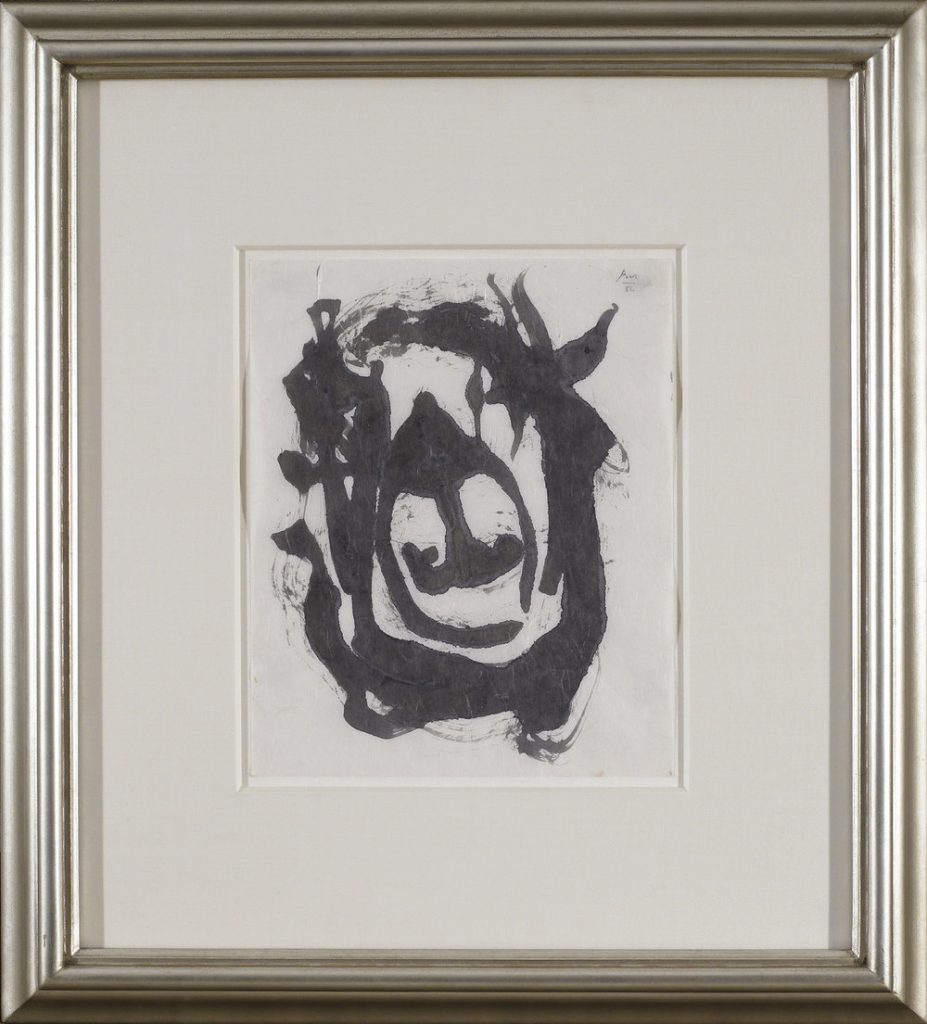
He was an accomplished painter and his brushstrokes produce clean, outstanding marks, well concentrated colors, and shapes, and the unpainted white spaces emerge as expressive patterns. I read that it can be seen as a kind of mental cartography at work. These works requires looking closely, which draws the viewer more deeply into the present moment, which I believe is an encounter or experience with art.
I had a cold and did not do walking for more than two weeks. I started with ink and Japanese rice paper. I made the following rules:
- no judgement of the work
- no revisions or adjustments
- nothing thought out
- stay intuitive
I started with acrylic inks which I could through onto canvas paper or Japanese rice paper. On the canvas paper, I added a light water spray. The movement of the mediums when mixed was fascinating but also brought the chance effect: I could manipulate by moving the paper and also change the effects of these flows, the possibilities of different outcomes open up. I made a mistake whilst working on the paper, to keep the rest of the paper underneath it, so the rest of the papers were ‘marked’ by the drawing/painting. I ordered new paper and in the mean time worked on other paper to stay in the flow of making gestural marks.
Images of work done on Rice Paper:
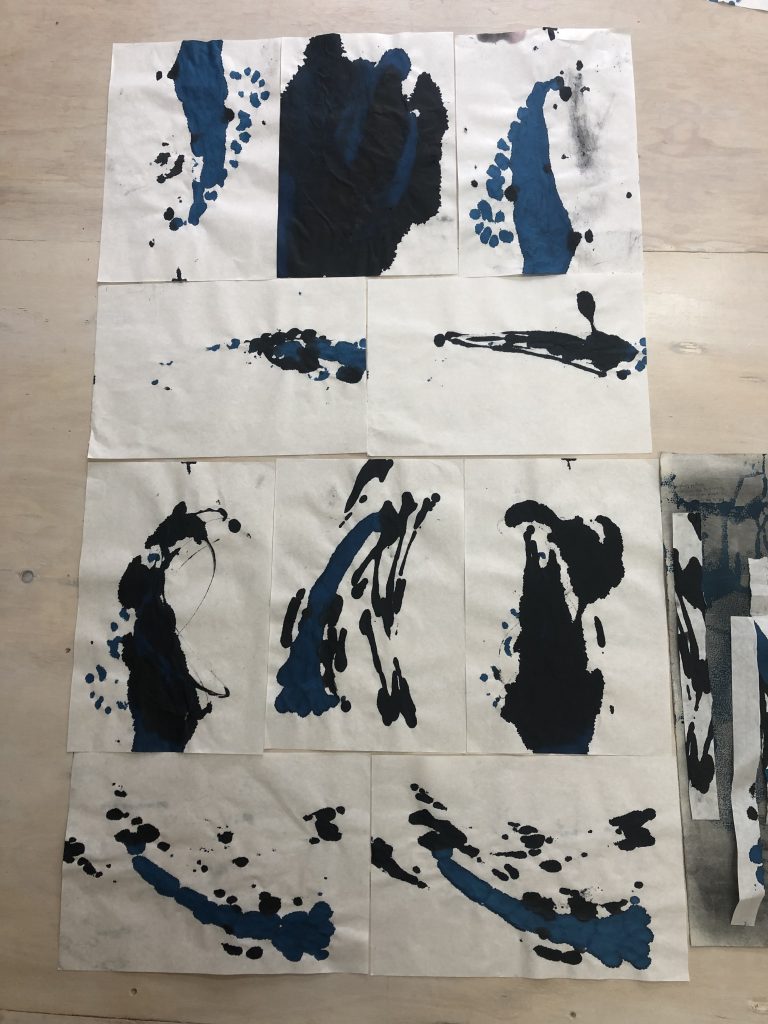
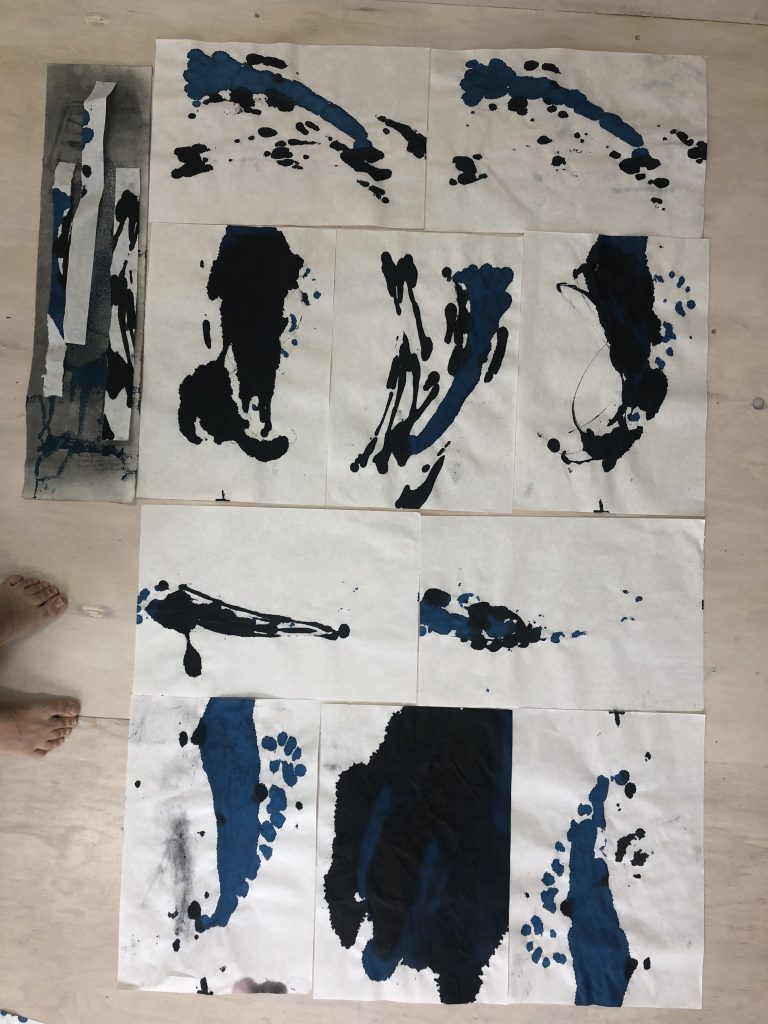

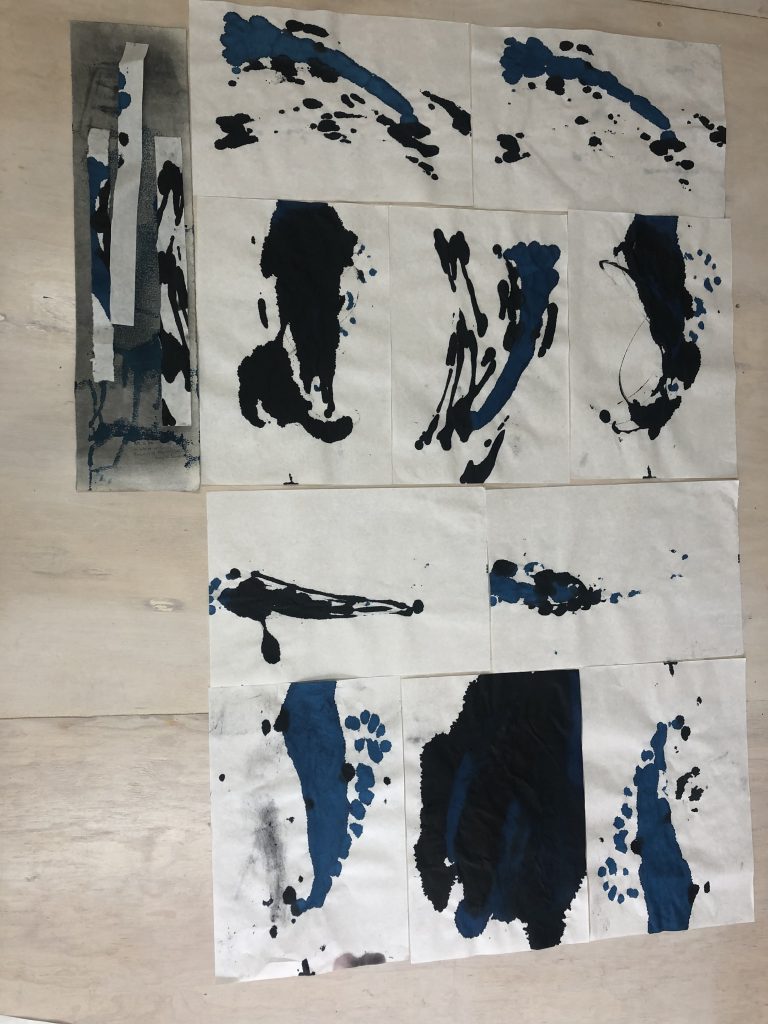
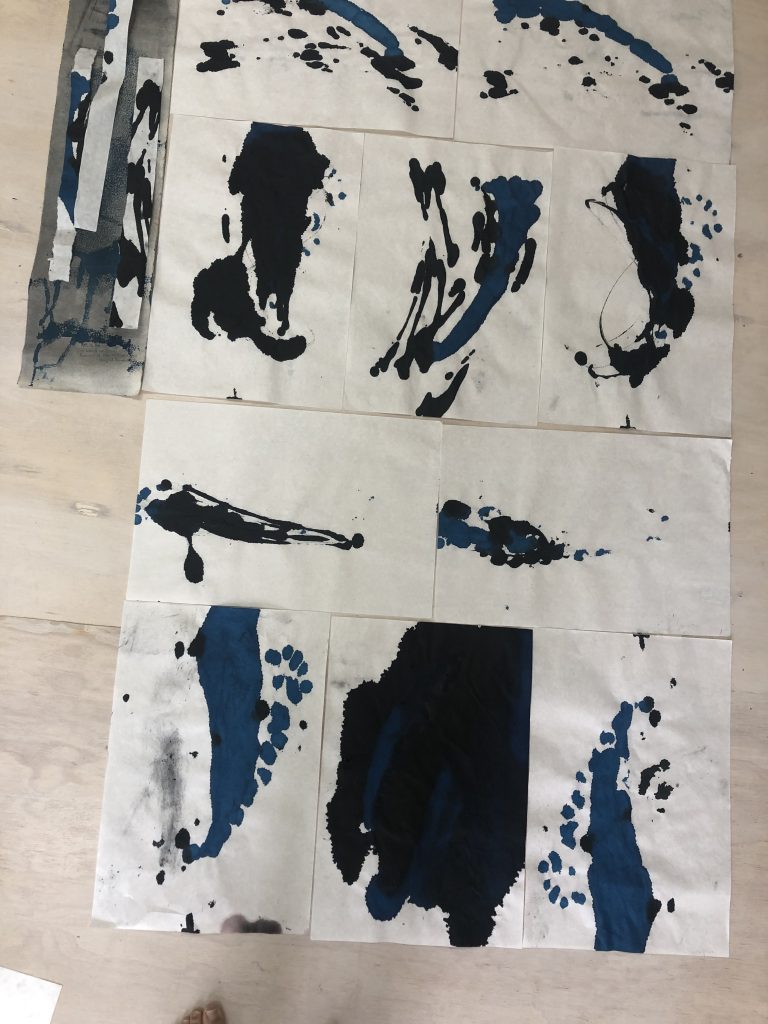
Above works were stopped as I felt the paper was damaged. i looked at using the paper to consider collage of weaving.
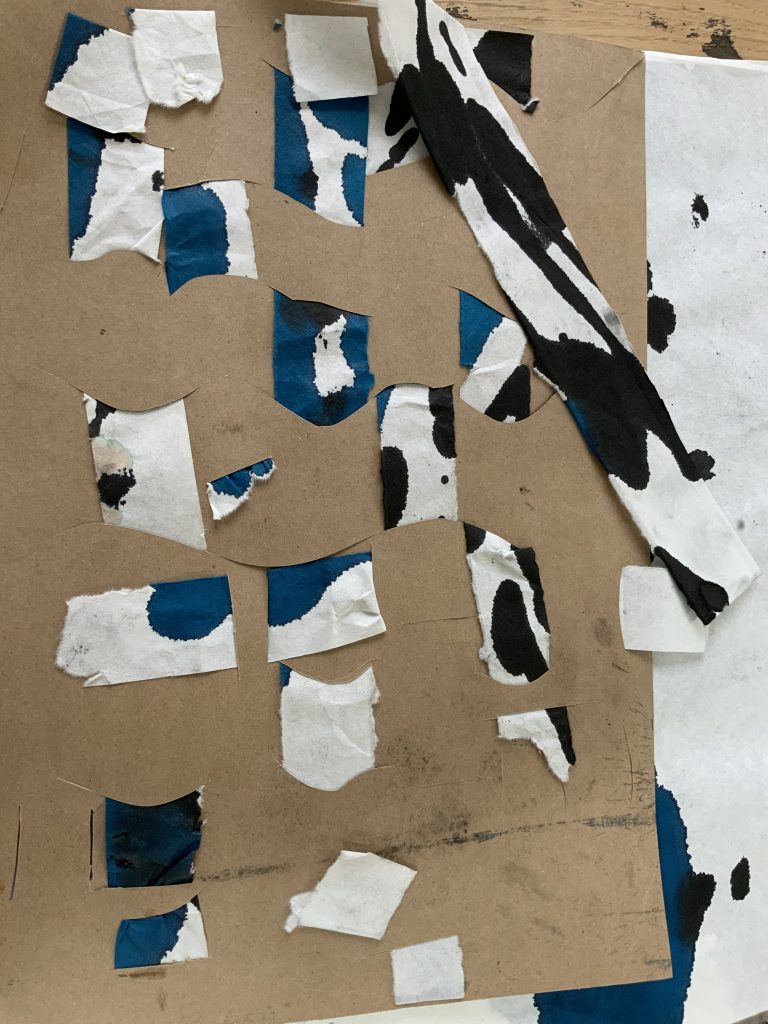
My sketchbook and pages were also used to explore gestural marks with ink and Sumi brushes. I worked in a A3 journal sized sketchbook as well as on other materials such as watercolour paper, water colour board and a smaller sketchbook. I felt the movement of ink and brush on these different materials was changing and that the flow of lines on a smaller size sketchbook, intended for dry materials, was the best experience. I plan to look at the paper type in more detail.
Below are a few images from my A3 Sketchbook
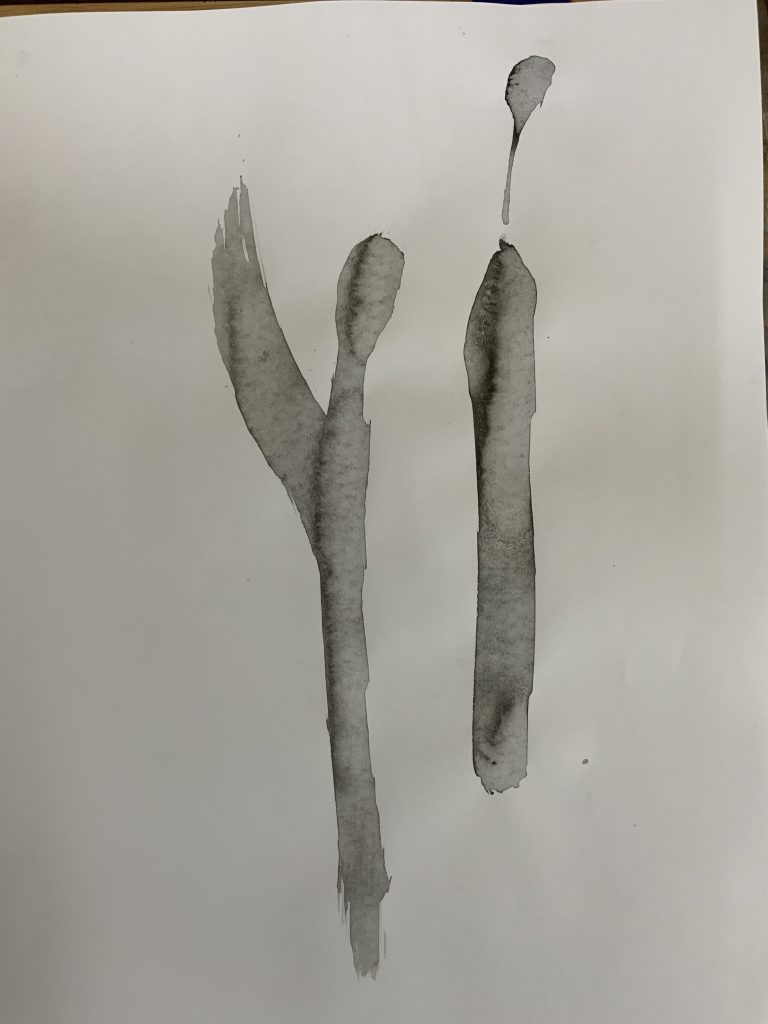
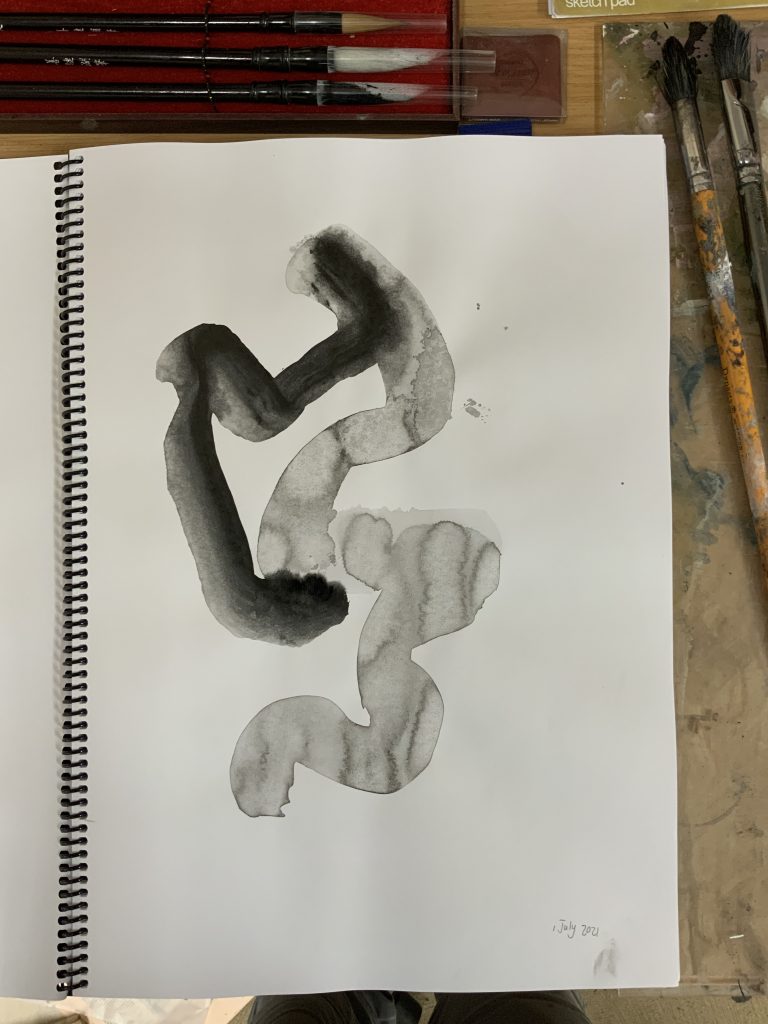

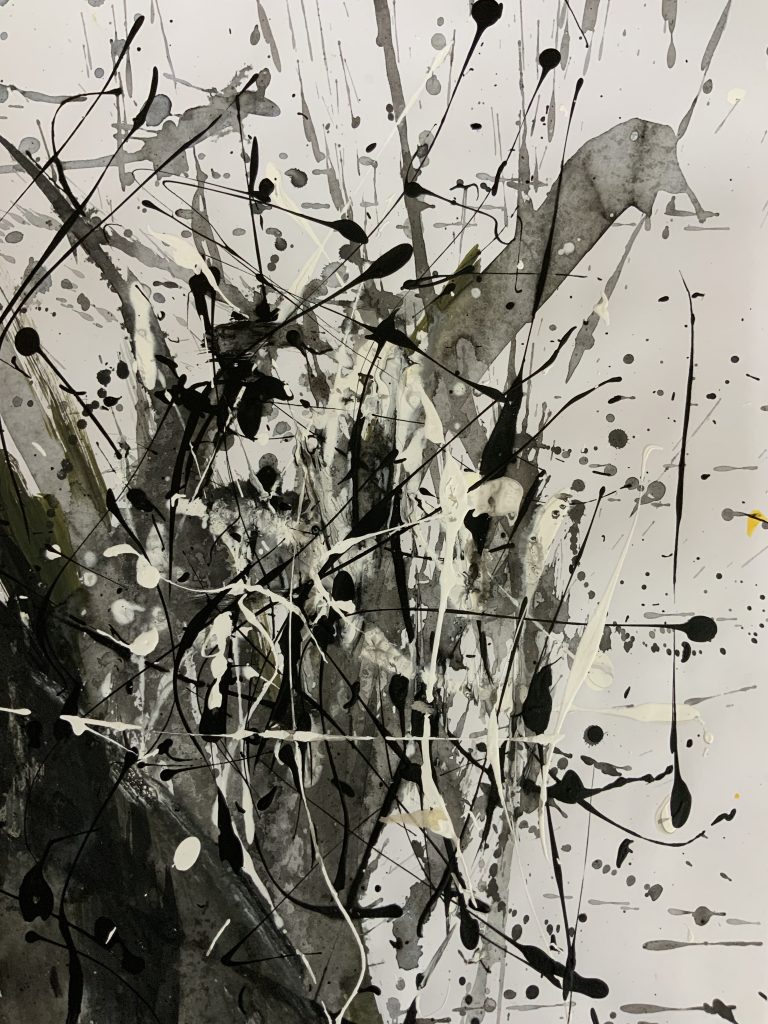
Below is an image showing the details of the ink pigment and connection with the smaller (dry medium) paper, as a history of my gesture. I did not get this range of a history on the Sumi paper I used for the series for Assignment 1. I believe experience and knowledge within the process of making will show if I made the correct assumption with regards to how ink reacts to different paper surfaces.
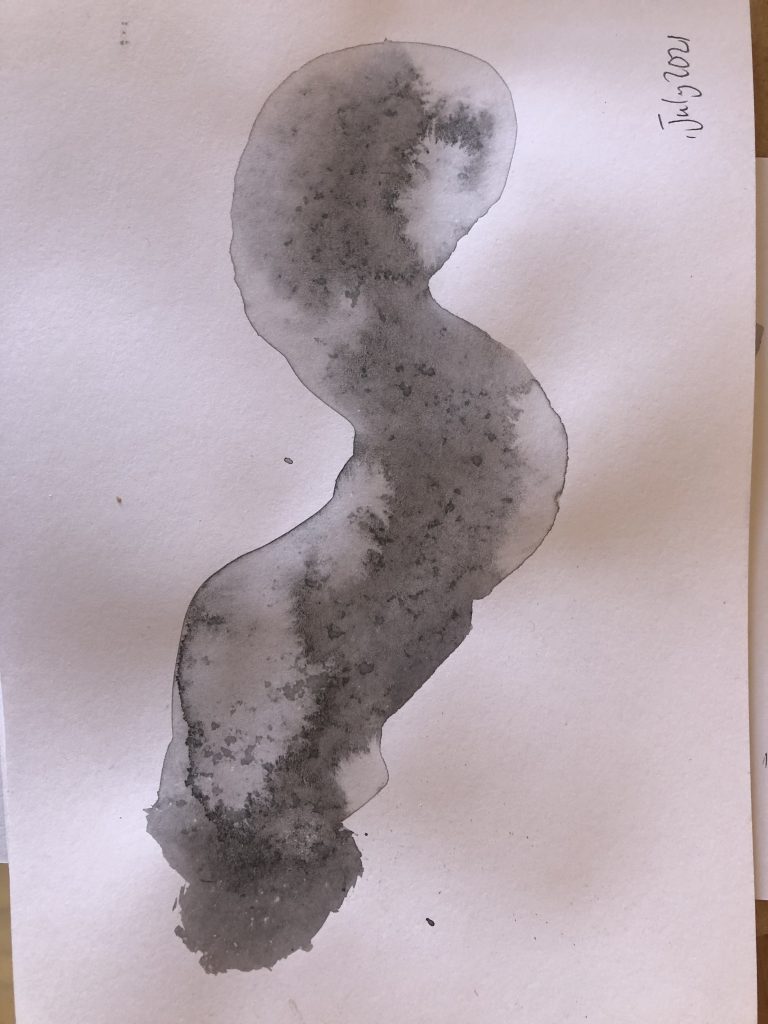
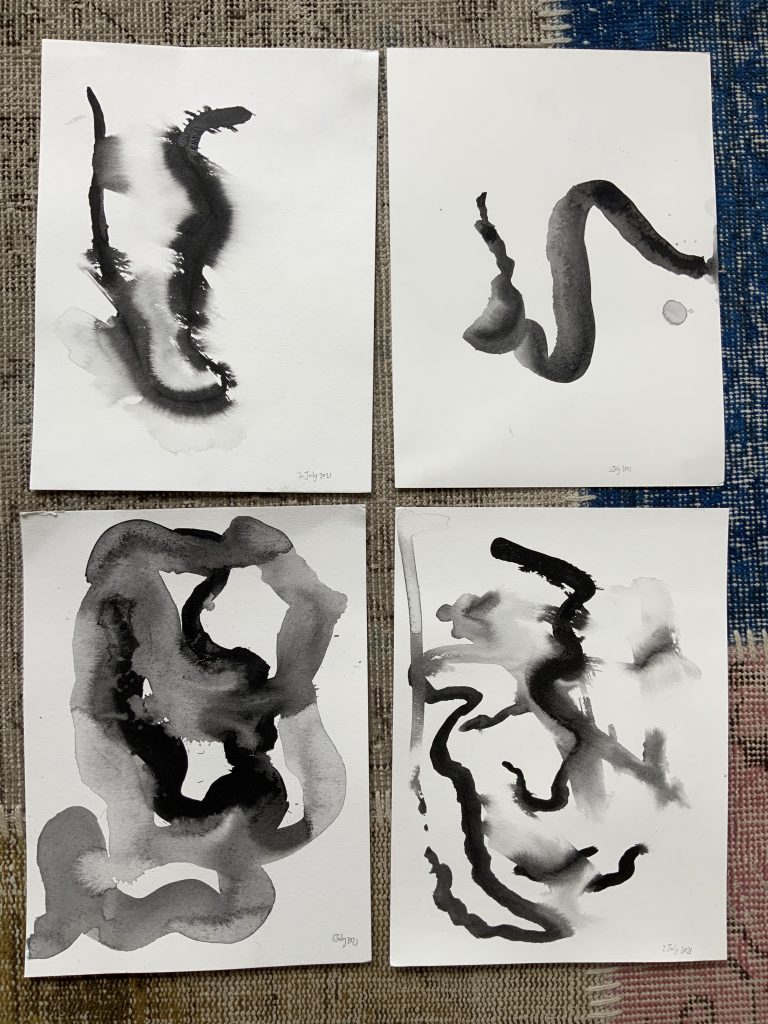
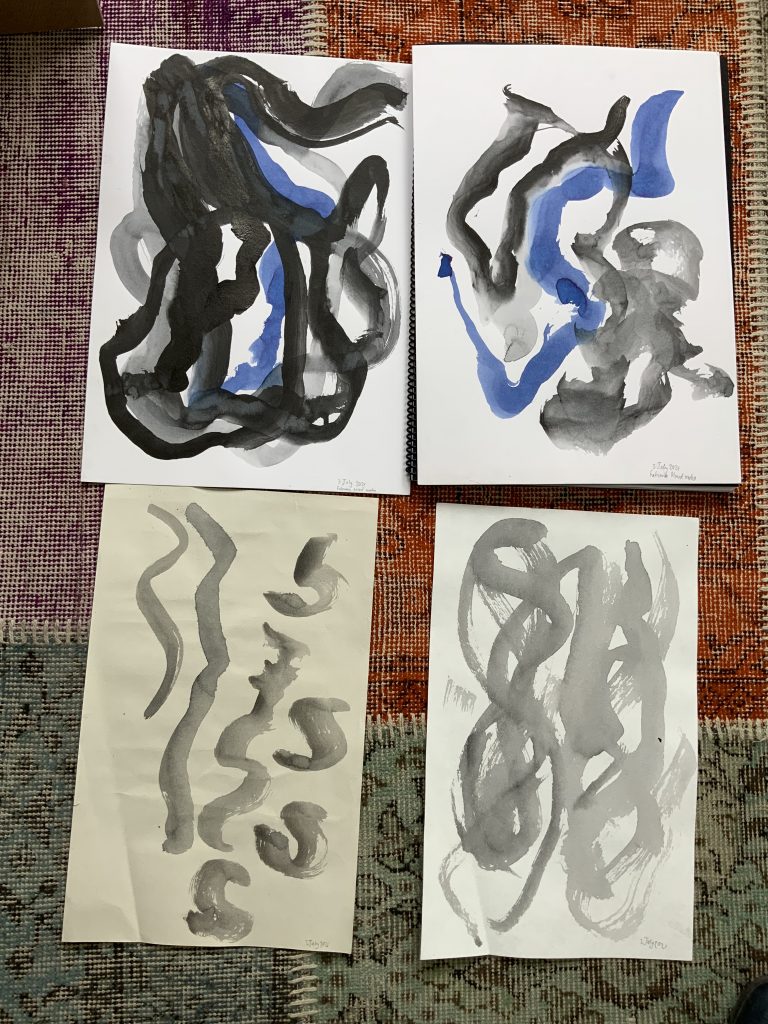
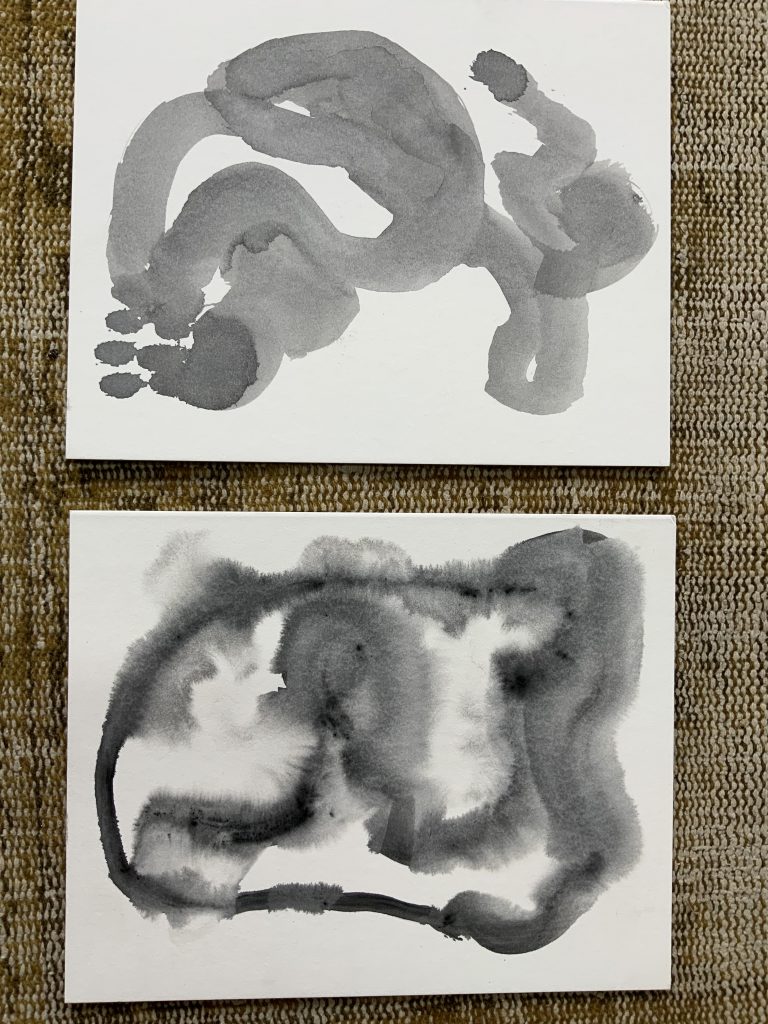
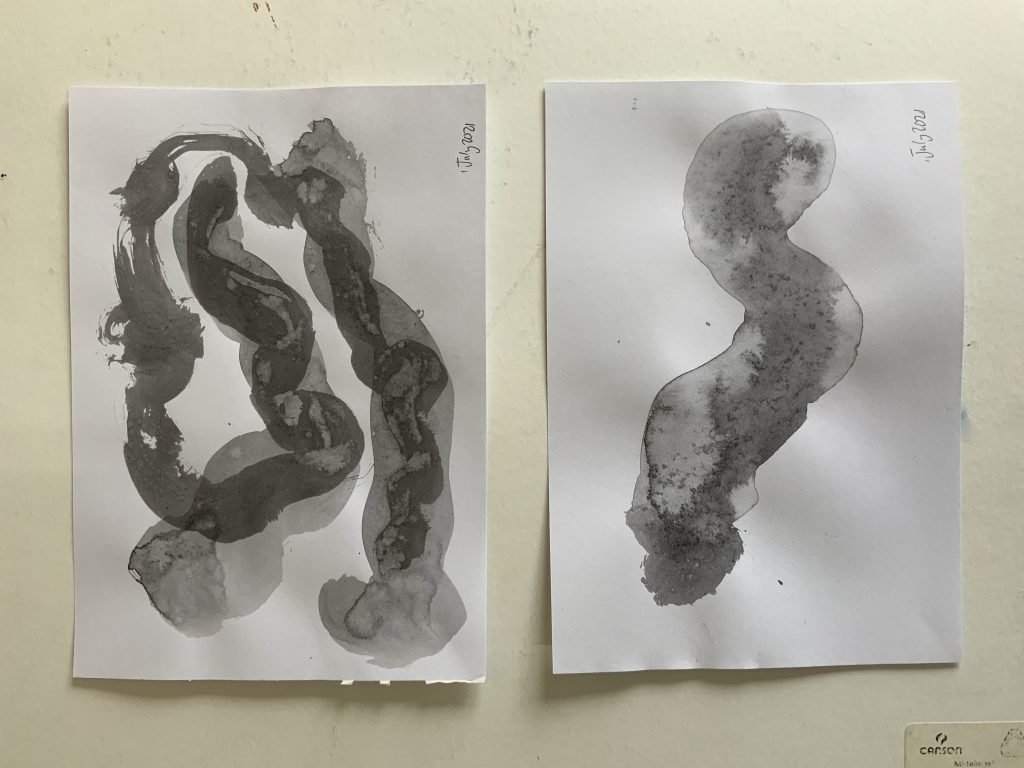
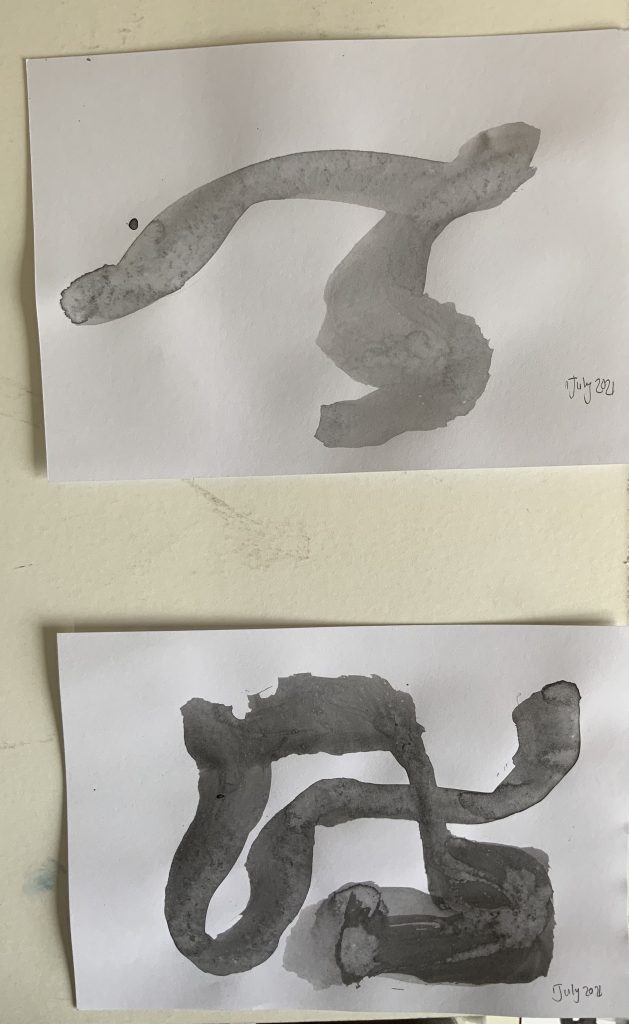
REFLECTIVE ACCOUNT OF THE SERIES
Series of 10 drawings were made with Sumi and/or big brushes in ink on Hahnemuhle Sumi-e paper (80gsm) x 10 sheets. I had the work on the floor and focussed on gestural mark making with the brushes. I felt how the Sumi brush when loaded with ink would move over the paper and leave traces of my movement. I tried to move onto the next work without much thought about the outcome, but felt a sensation of connectedness to the materials, which I would name an event between me and the work being made. I felt free, but also strange to stay in the process without judgement. I tried to work with less ink, more diluted and liked the different mark-making. after a while I was turning and twisting the brush with ease. On deciding when to stop I found it was good to stop as soon as ideas of adding a mark felt like I was actually trying to think out the form or action, came to mind. Questions arose: Was I working on an automatic way? I am not so sure, but can report that the process was open and only ended when I ran put of paper of felt disconnected to continue. Is it a sustainable practice? I found it contemplative and relaxing. I did the works over three days. I enjoyed the drawing part throughout all the exercises, the different papers I worked with open ideas about preferences and learning techniques. Working with the Sumi brushes was a lovely tactical exercise, I ordered more brushes. I decided to continue with gestural drawings in ink with Sumi brushes as part of a daily practice, paper size will vary in this to be continued practice. I will date the works. I feel I can make use of any paper materials I have. In terms of developing the process I ordered a roll of wallpaper, the white under-paper and will work directly on the wall, as the paper will be connected onto a bracket which will hold it on the wall. For this I will explore the gestural marks of Cy Twombly in this work, add colour, words, and smaller gestures as well. I also consider to work on canvas with gestural marks, such as pouring and dripping.
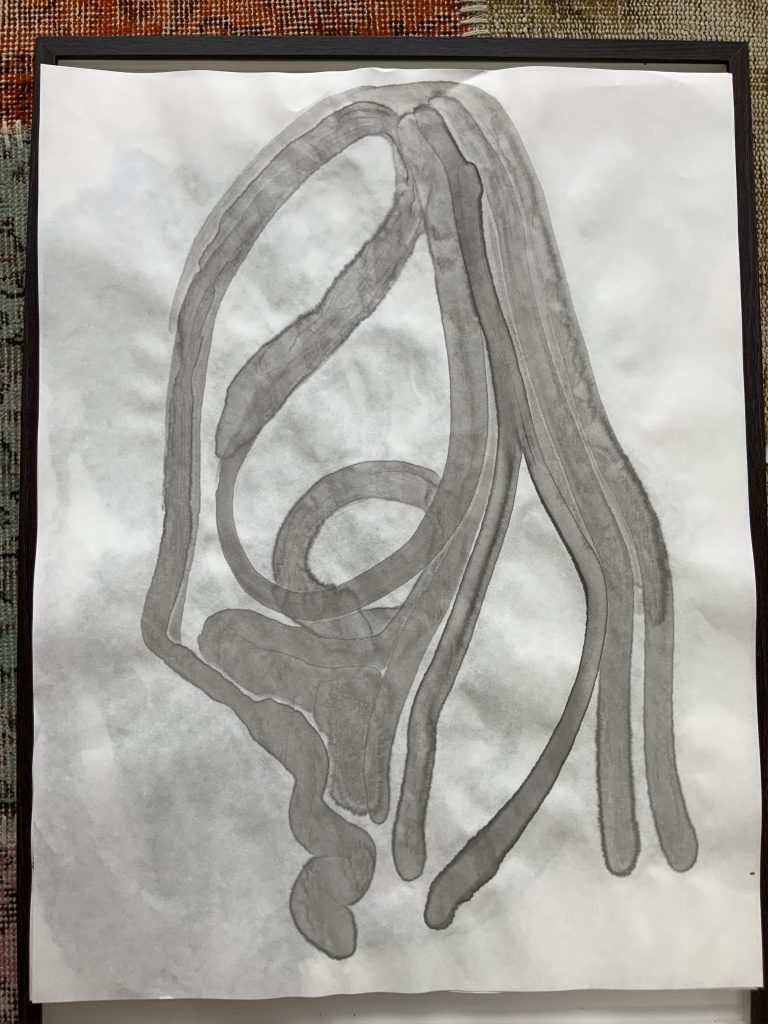

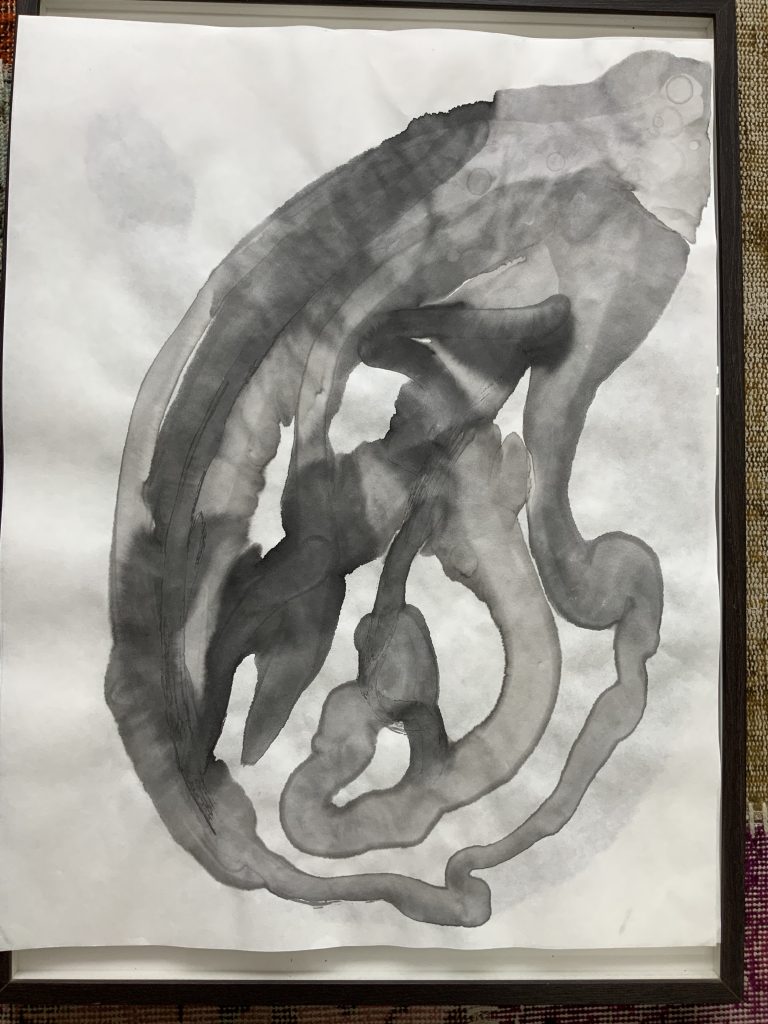
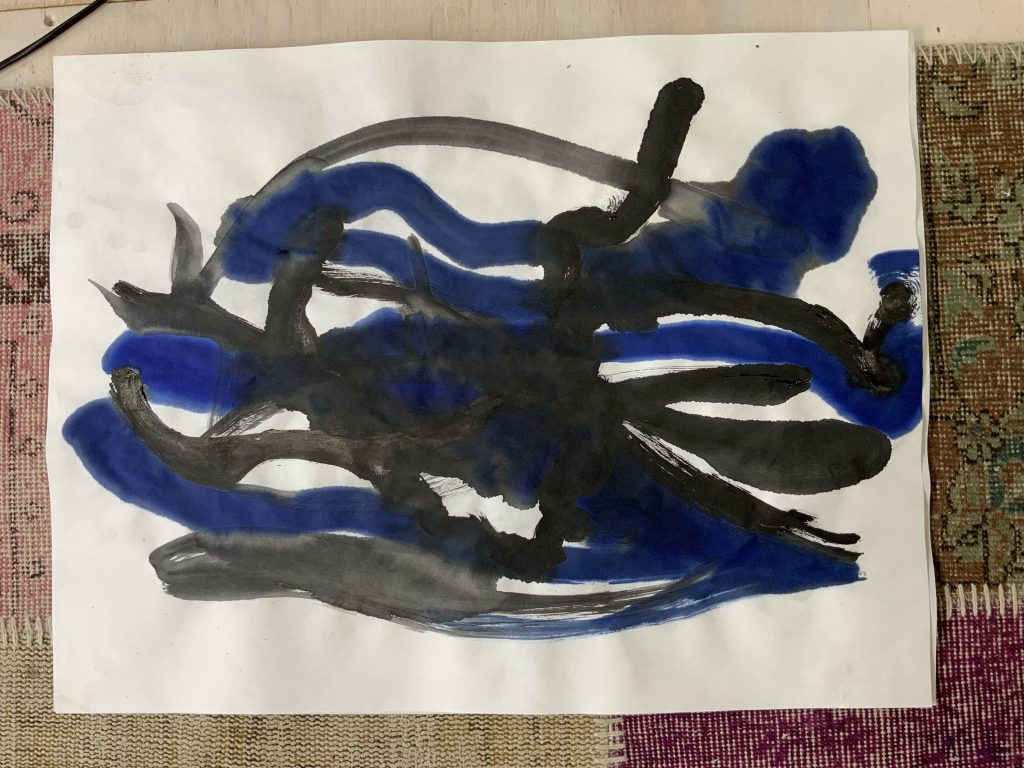
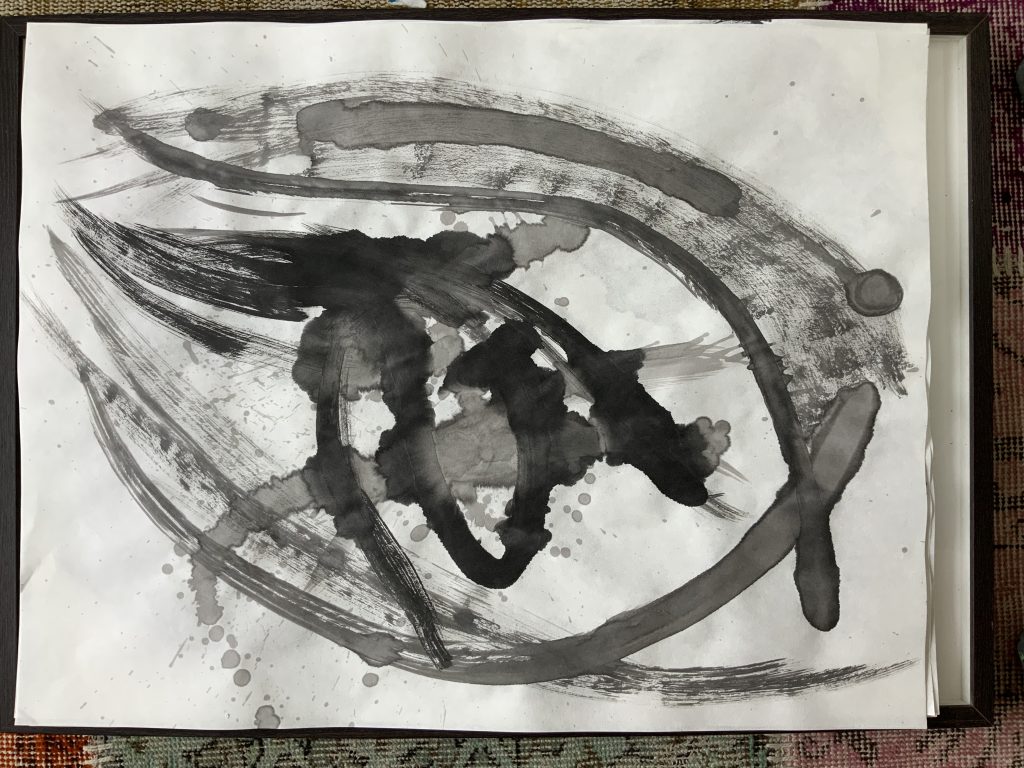

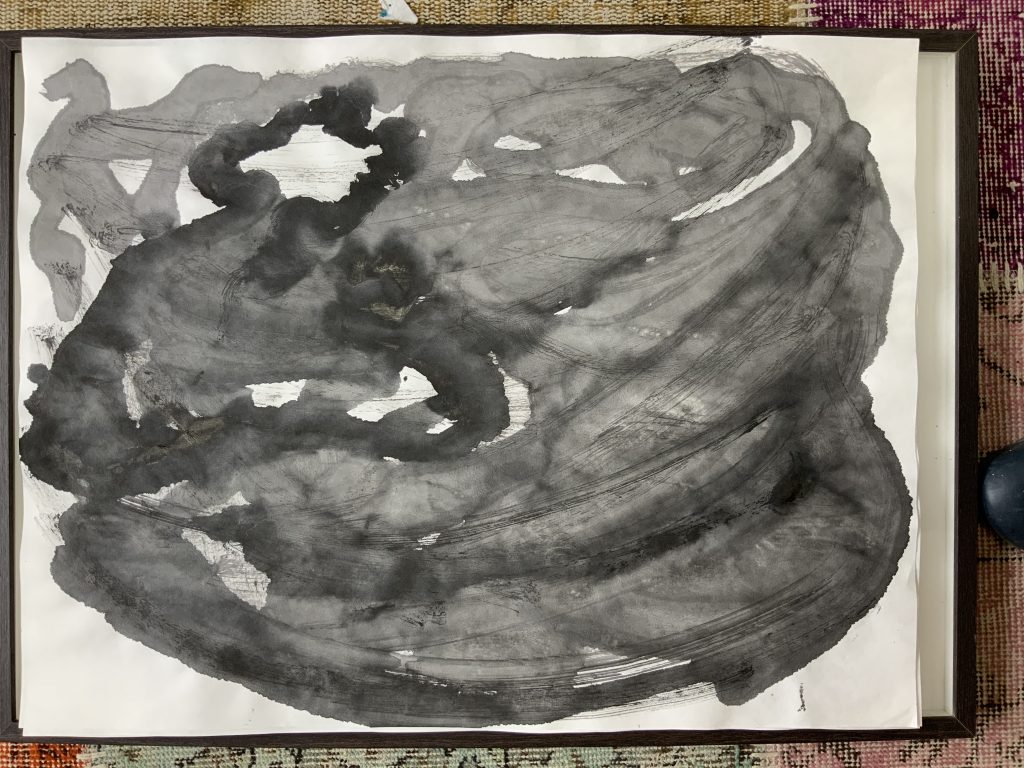
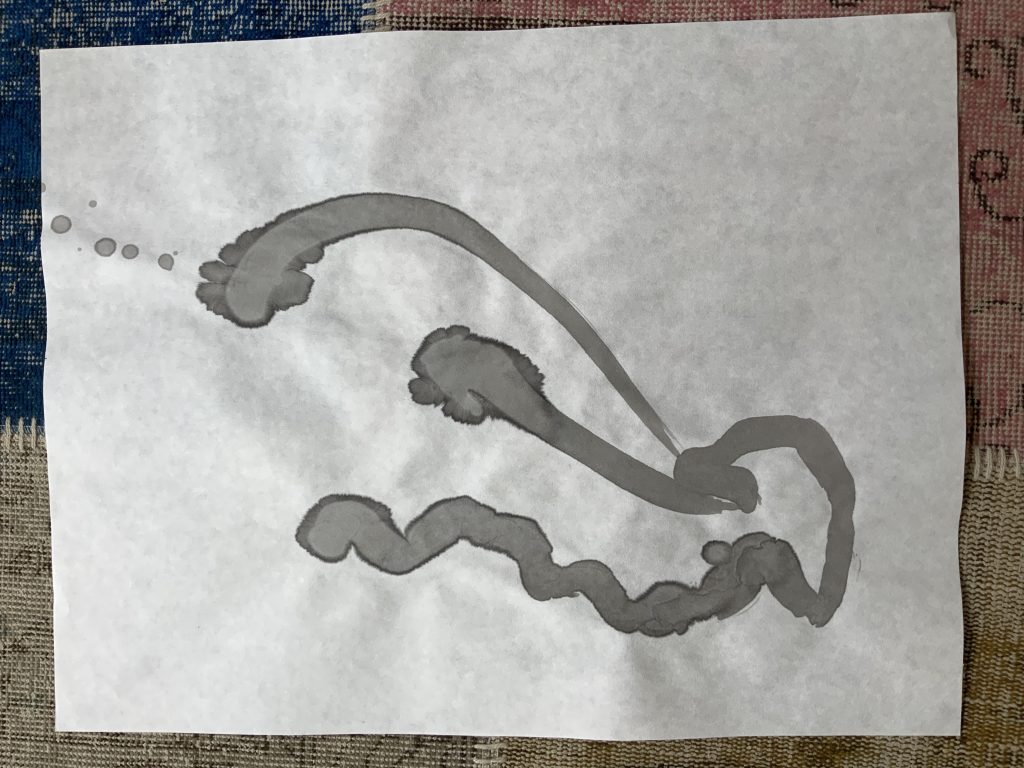
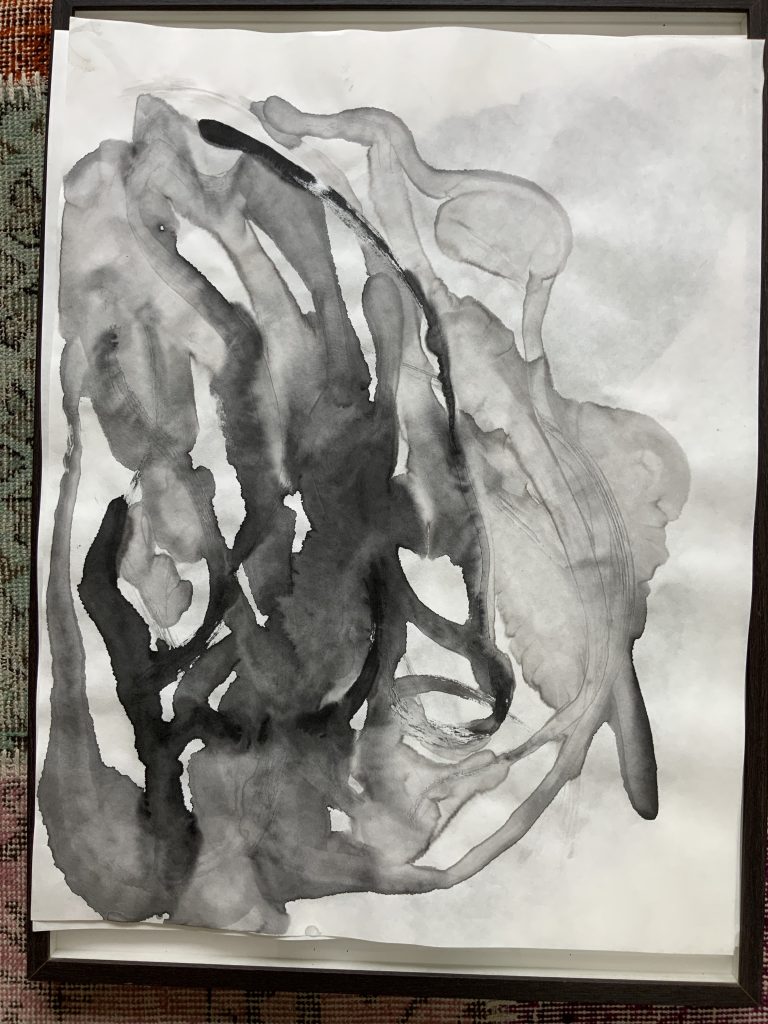
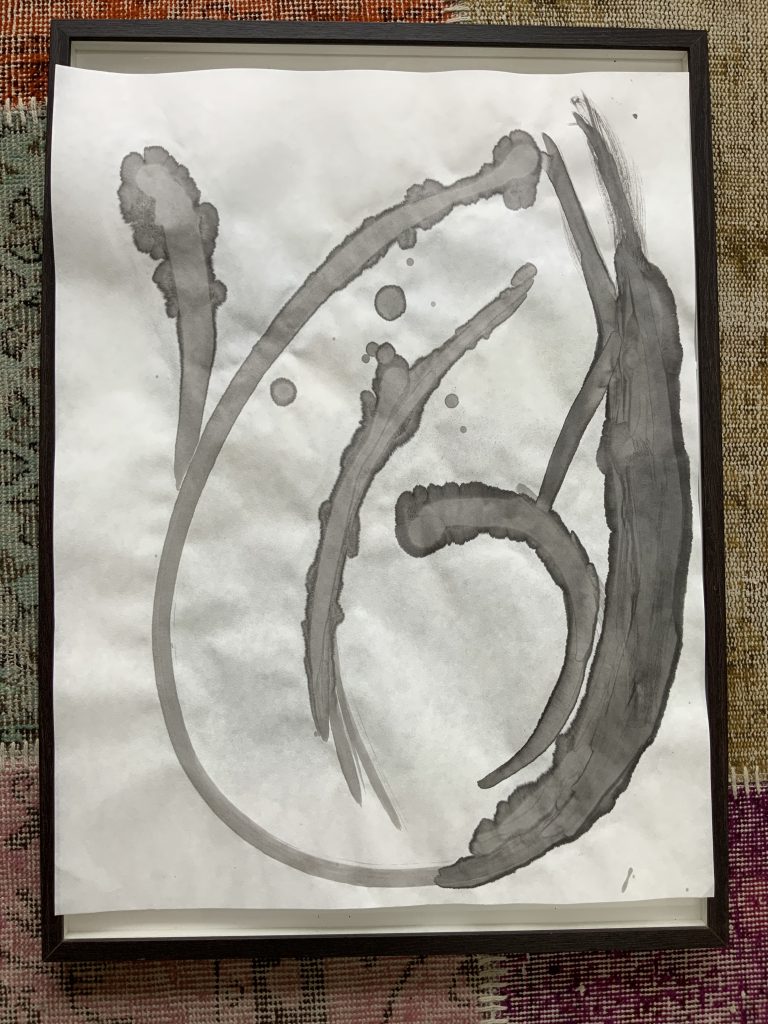
Keane, Tim, 2014 Absolutely modern:Robert Motherwell on Paper, article in Hyperallergic.com https://hyperallergic.com/168139/absolutely-modern-robert-motherwell-on-paper/